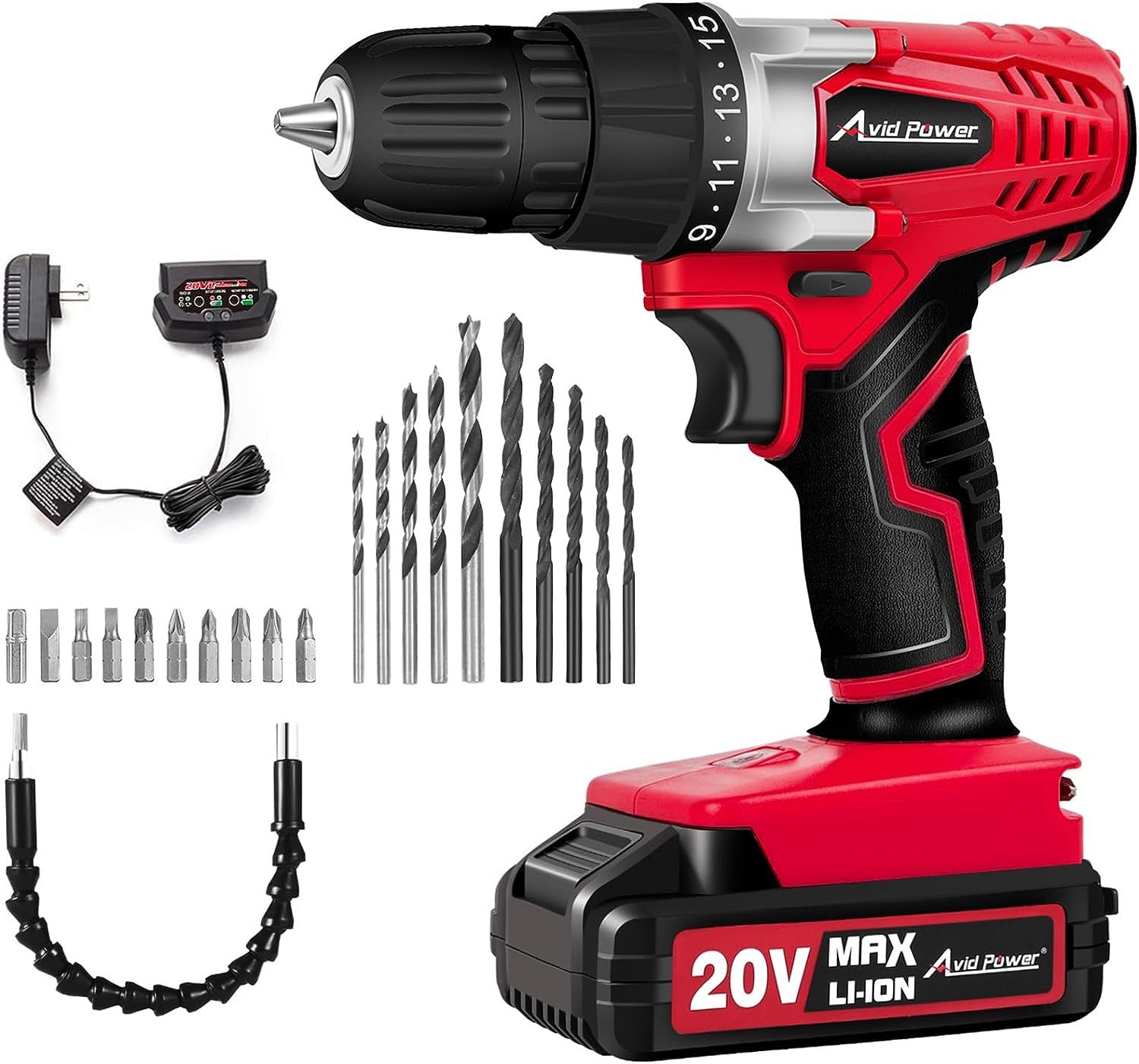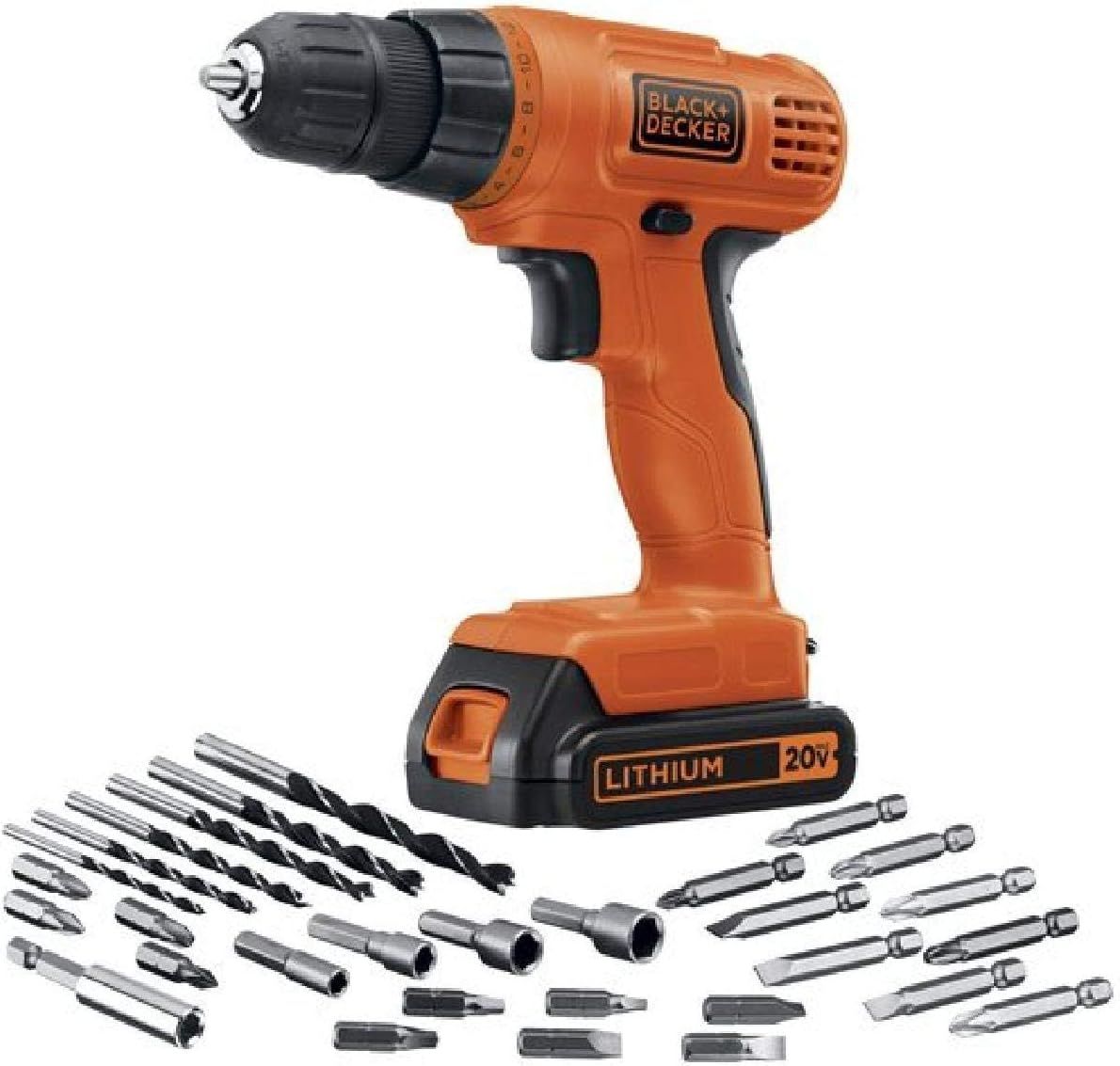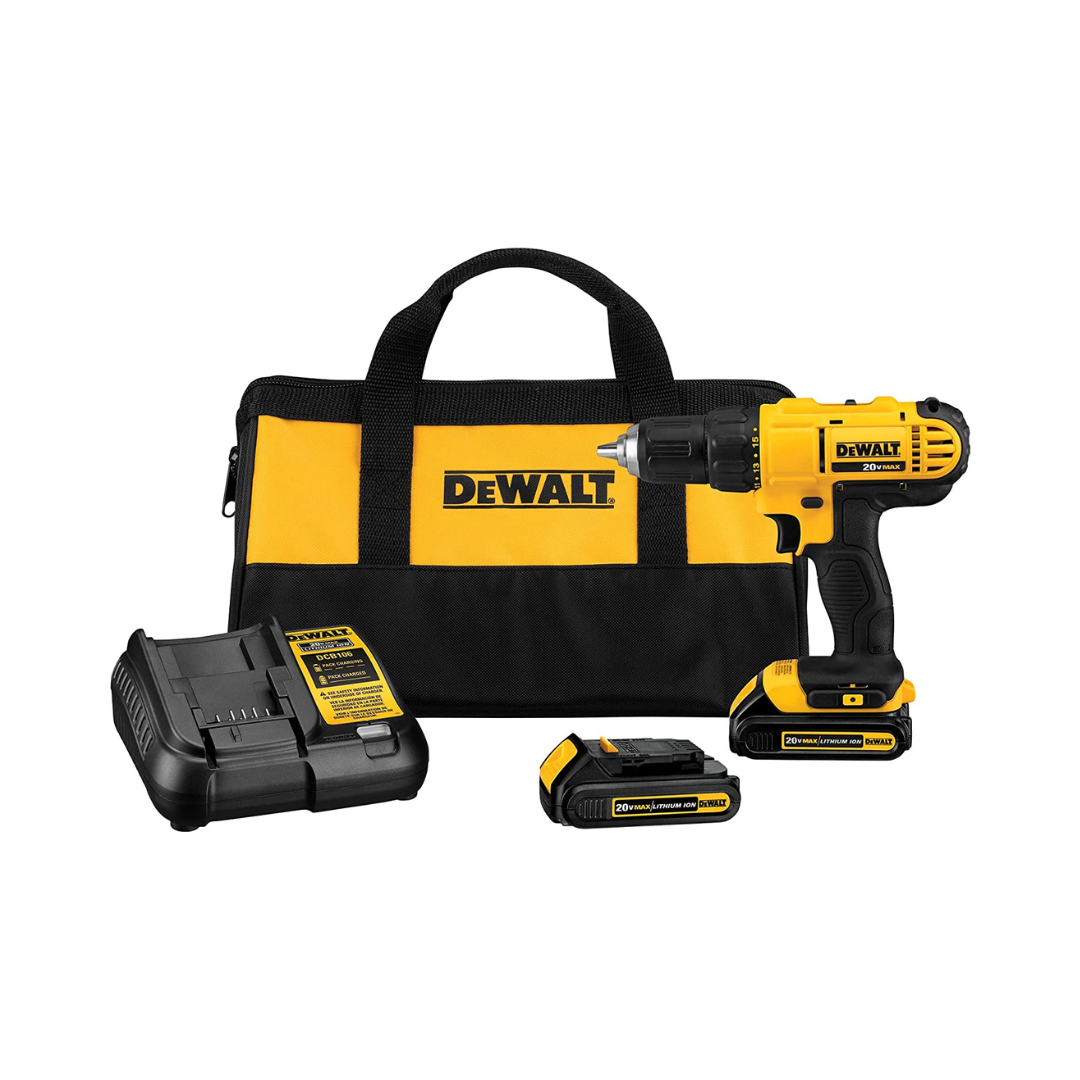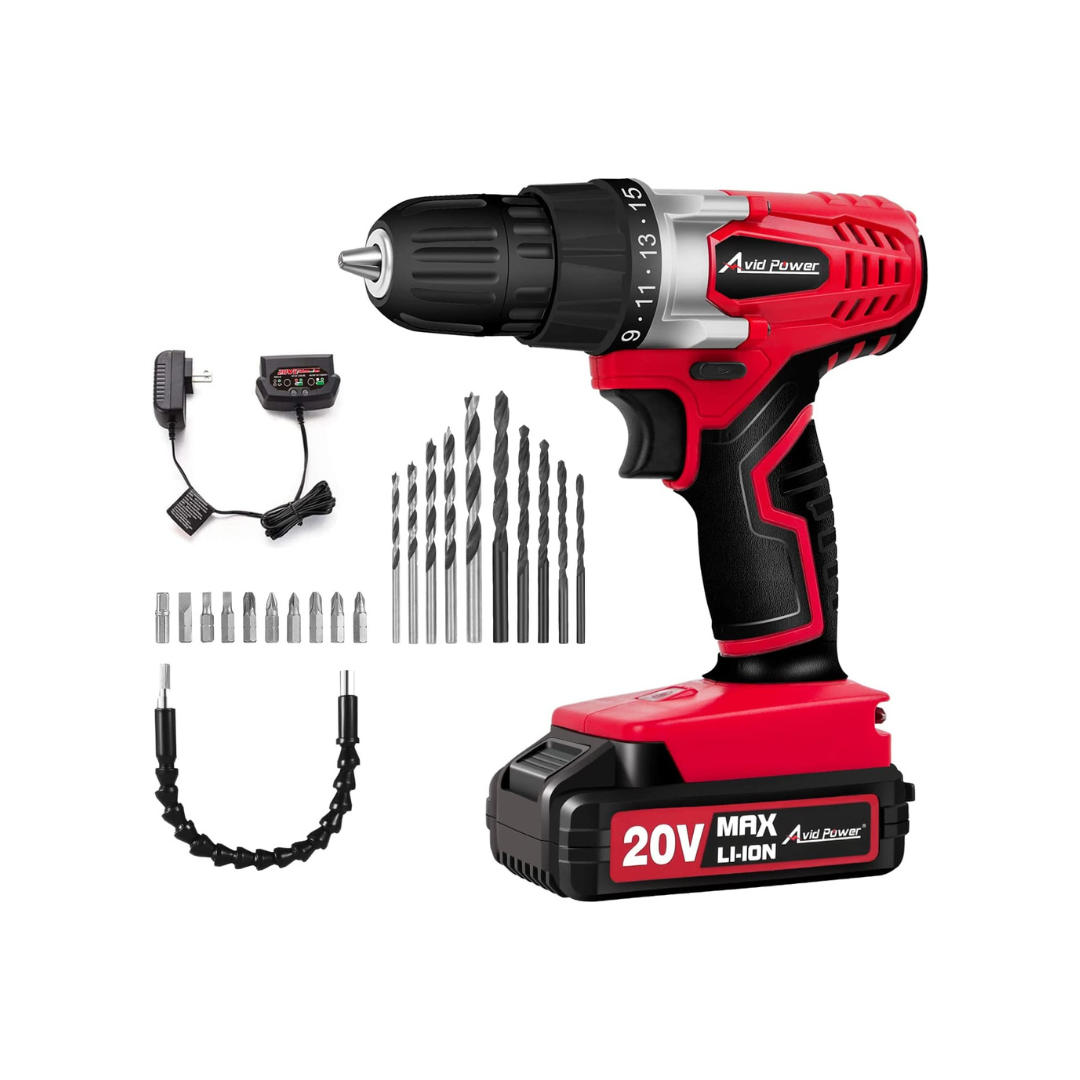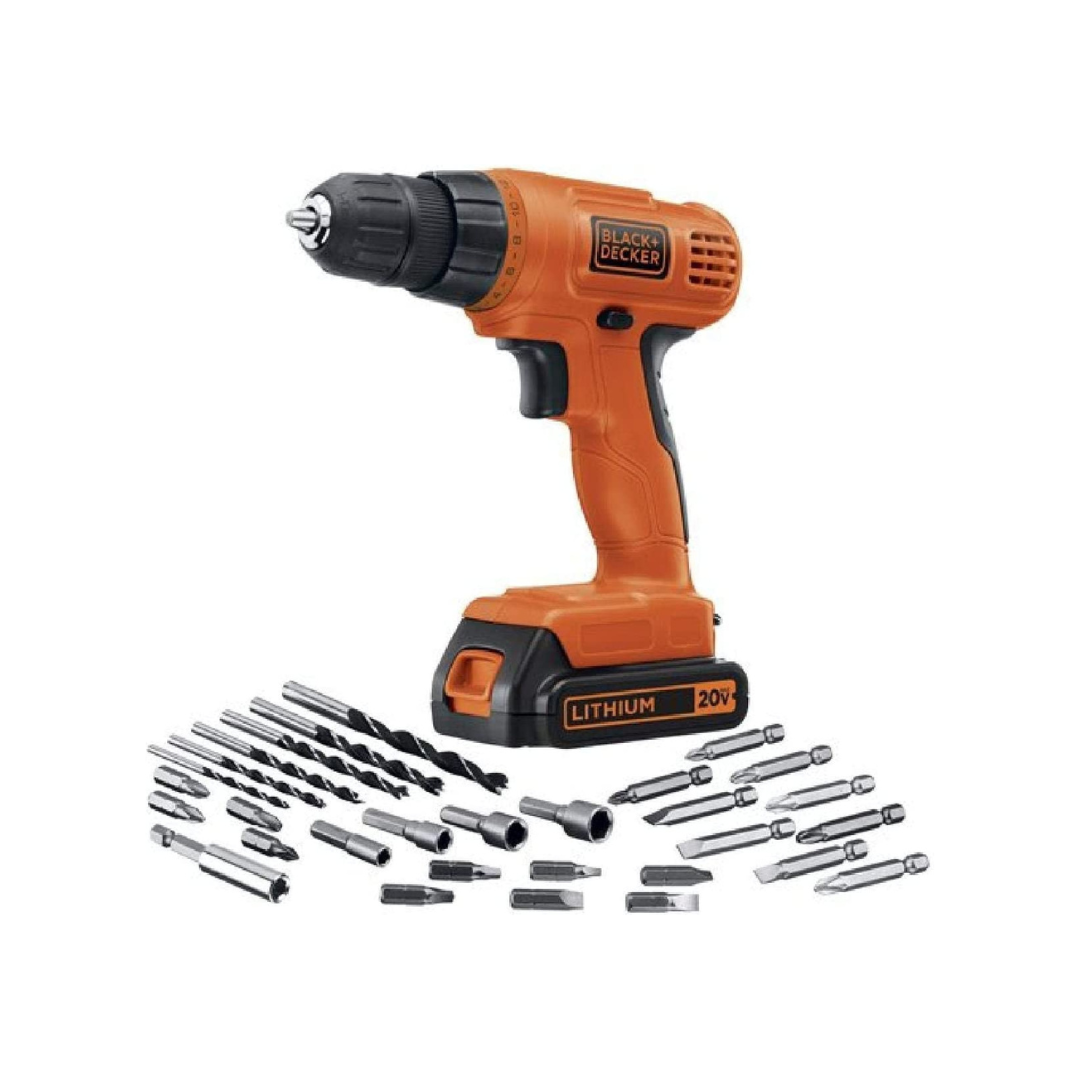We may be compensated if you purchase through links on our website. Our team is committed to delivering honest, objective, and independent reviews on home products and services.
In This Guide: Top 3 | Buyer’s Guide | Review Standards | FAQs | How We Selected | Our Testing Process | Why Trust This Old House
If you’re looking for a drill you can use on-the-go, a cordless drill offers power and convenience with its compact design and ability to run on rechargeable batteries. Whether you need to put together a new piece of furniture or hang up a piece of art, cordless drills offer an ideal solution for many do-it-yourself (DIY) projects.
We tested the best cordless drills on the market, taking a closer look at specific metrics, power and speed, and ergonomics to help you find the right fit. Or, if you’d prefer a corded electric drill, you can check out our top recommendations.
Top 3 Cordless Drills
- Most Durable: DEWALT DCD771C2 Cordless Drill/Driver
- Most Lightweight: Avid Power Cordless Drill
- Best Battery Life: BLACK+DECKER LD120VA Cordless Drill
Compare Top Cordless Drills
| Product | Voltage | Max Speed | Chuck Size | Weight |
|---|---|---|---|---|
| DEWALT DCD771C2 Cordless Drill/Driver | 18 | 1,500 RPM | 1/2 inch | 3.6 pounds |
| Avid Power Cordless Drill | 18 | 550 RPM | 3/8 inch | 2.2 pounds |
| BLACK+DECKER LD120VA Cordless Drill | 18 | 750 RPM | 3/8 inch | 4.2 pounds |
| Product | Voltage | Max Speed | Chuck Size | Weight |
Most Durable
Key Features
- Nominal voltage of 18
- ½-inch keyless chuck
- 3.6 pounds
- Speed of up to 1,500 RPM
- LED light
- Comes with: Carrying bag, two lithium-ion batteries, battery charger
What Customers Are Saying
Customers liked how easy it was to use this drill and said the few bells and whistles it had worked well, with the built-in LED light being bright and the extra battery pack allowing for continuous work. The small percentage of customers that weren’t happy with the drill said that the batteries that came with it only lasted a few months before no longer holding a charge.
Our Experience
Product Setup
This is the only product we tested that didn’t come with drill bits. However, we could attach bits from the other products in this review, even though this drill’s chuck size was larger.
Ergonomics
This product weighs under five pounds, has rubber on its handle for an easy grip, and distributes its weight evenly throughout the drill, so we gave it full points for this metric.
Power
This cordless drill had no problem drilling and driving through the hard, medium, and softwoods. It required some pressure during drilling, but after a few seconds, the drill bit or screw would poke out of the other end of the wood.
Runtime
The battery life and recharge time for this drill were on two extremes of the spectrum. The battery only lasted 20 minutes of heavy-duty use before it died and required a recharge, which is the shortest battery life of any of the batteries in this review.
However, the drill took only two hours to recharge, which is less time than the rest of the drills, and it came with an additional battery, so we didn’t have to wait around for the one battery to recharge.
Our Score
This product received five points for both ergonomics and power. However, it lost a point for runtime because we had to recharge the batteries frequently.
Scoring Breakdown
| Metric | Score |
|---|---|
| Ergonomics | 5/5 |
| Power | 5/5 |
| Runtime | 4/5 |
| Overall score | 4.7/5 |
| Metric | Score |
Most Lightweight
Key Features
- Nominal voltage of 18
- ⅜-inch keyless chuck
- 2.2 pounds
- Magnetic flexible shaft
- Speed of up to 550 RPM
- LED light
- Battery charger
- Extension bar
- Lithium-ion battery
- Bits: 10 drill bits, 10 driver bits
What Customers Are Saying
Satisfied customers said they couldn’t beat the price of this product and were happy with all of the accessories that came with it. Customers also liked the drill’s flexible shaft for hard-to-reach places and the USB port on the battery for charging electronics. However, some customers said that the chuck didn’t grip the bits well, causing them to detach from the drill when drilling through hard materials occasionally.
Our Experience
Product Setup
This drill came in a box with all of its accessories. We pulled out the drill, attached the battery to the bottom, and attached the correct bit to the chuck for drilling holes and driving screws.
Ergonomics
This drill weighs 2.2 pounds and has a rubberized grip around the handle, making it lightweight and comfortable. Even with the battery in place, which is the heaviest element of this drill, the drill’s weight was evenly distributed.
Power
Similar to the previous two drills, this drill had no problem drilling and driving into both hard and softwood. It did take a while for the screw to completely penetrate the wood and for the drill bit to drill a hole through the wood, but it eventually got there with patience.
Runtime
This drill lasted 40 minutes of continuous use before needing a recharge. However, it took three hours and 15 minutes to recharge, which is the second-longest recharge time behind the Black & Decker drill.
Our Score
We gave this product full points for both ergonomics and power because it’s comfortable to use and drills through hard and soft woods. However, it lost a point for runtime, mostly because of its long charge time.
Scoring Breakdown
| Metric | Score |
|---|---|
| Ergonomics | 5/5 |
| Power | 5/5 |
| Runtime | 4/5 |
| Overall score | 4.7/5 |
| Metric | Score |
Best Battery Life
Key Features
- Nominal voltage of 18
- ⅜-inch keyless chuck
- 4.2 pounds
- Speed of up to 750 RPM
- LED light
- Lithium-ion battery
- Battery charger
- Bits: Six brad point drill bits, 10 one-inch screwdriver bits, nine two-inch screwdriver bits, four nut driver bits, and a magnetic bit tip holder
What Customers Are Saying
Several customers complimented this drill’s ability to complete household tasks, like putting furniture together and mounting items on the wall, praising its twisting power. However, some customers said that their drill didn’t work as well when it hit resistance. For example, the drill would get stuck when drilling through harder wood.
Our Experience
Product Setup
Like with the Avid Power drill, this cordless drill came in a box with accessories. After attaching the battery to the base, we switched the drill bits in and out by loosening and tightening the chuck.
Ergonomics
While this drill is heavier than the other three products reviewed so far, it still weighs under five pounds. It doesn’t have a grip that wraps around the product like the previous three, but it has a grip in the back, and the handle is relatively small, helping it fit comfortably in your hand. Its weight is also balanced from tip to base.
Power
We agree with the customers who said the drill struggles with harder materials. When drilling holes or driving screws into the hard and medium woods, the drill occasionally got stuck. When that happened, we could use the reverse function to pull the bit or screw out and start over.
Runtime
This drill lasted 30 minutes of rigorous use, which is longer than some drills and shorter than others. However, it took the longest to recharge at 3.5 hours.
Our Score
We gave this drill full points for ergonomics, but we took off points in both the power and runtime categories because it occasionally struggled with harder wood and took a long time to recharge.
Scoring Breakdown
| Metric | Score |
|---|---|
| Ergonomics | 5/5 |
| Power | 4.3/5 |
| Runtime | 3.5/5 |
| Overall score | 4.3/5 |
| Metric | Score |
Buying Guide to Cordless Drills
In addition to considering a cordless drill’s ergonomics, power, and runtime, you’ll want to look at other factors like speed and extra drill features before purchasing a cordless drill.
Chuck
Cordless drills either have a keyed chuck or a keyless chuck. Keyed chucks prevent the bit from falling out during use, but they require a tool to remove the bit. Keyless chucks can be loosened and tightened around a bit without a tool. However, they’re more prone to falling out of the chuck because the vibration from using the drill can loosen the chuck’s grip.
Clutch Settings
An adjustable clutch is a helpful feature that sets cordless drill/drivers apart from basic electric drills. Located just behind the chuck, the clutch disengages the drive shaft when a preset level of resistance is reached, preventing overdriving of screws and protecting the motor.
More clutch settings offer finer control over the driving force. High-quality drills often have 24 or more clutch settings, allowing you to fine-tune the power delivery for various screw sizes and materials. When drilling holes, you can bypass the clutch entirely for maximum power.
Speed Range and Control
Most cordless drills have at least two speed ranges, typically around 300 RPM for driving screws and 800 RPM for drilling holes. Higher-end models may offer even higher top speeds, which can be beneficial for drilling into harder materials.
Variable speed control, usually activated through the trigger, allows for precise speed adjustments within each range. This feature is particularly useful when starting holes or driving screws, as it helps prevent slipping and provides better control.
Motor Type
The type of motor in a cordless drill significantly affects its performance, durability, and efficiency. There are two main types of motors:
Brushless motors: Modern cordless drills often feature brushless motors, which offer several advantages. They’re more efficient, providing longer battery life and more power for demanding tasks. Brushless motors also generate less heat and require less maintenance, making the drill last longer. While typically more expensive, the benefits often justify the higher cost, especially for frequent users.
Brushed motors: These are the traditional type of motors found in many cordless drills. They’re generally less expensive but require more maintenance due to the wear and tear of the brushes. Brushed motors can also be less efficient, leading to shorter battery life.
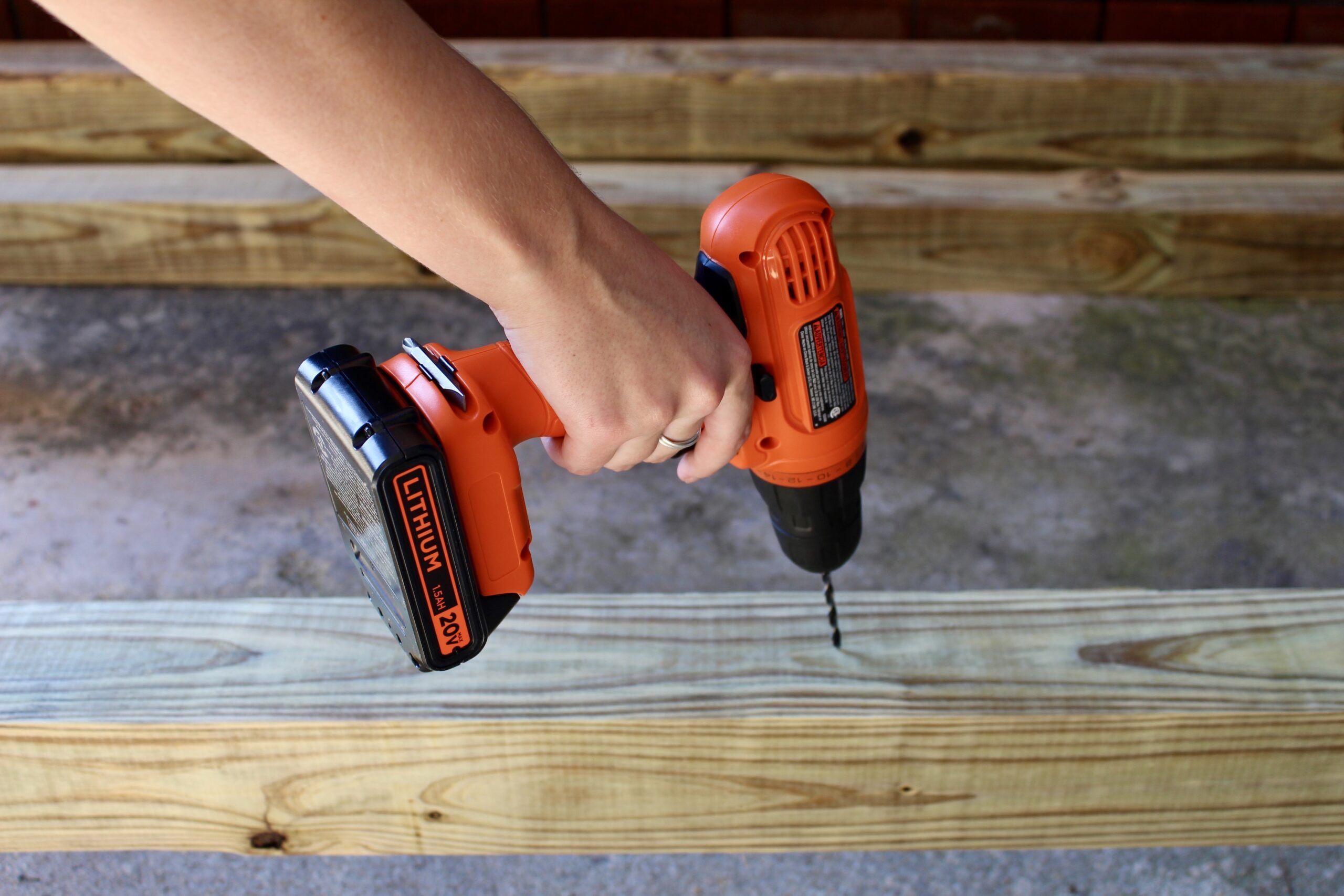
Brand
Some of the most reputable brands for buying drills and other cordless tools include DEWALT, Milwaukee, Ryobi, Dremel, BLACK + DECKER, Makita, Craftsman, Avid, and Bosch. However, that doesn’t mean other brands can’t also make reputable drills. If buying a drill from a lesser-known brand, just be sure to do your research and ensure it will be a high-quality product that fits your needs.
Price
The price of a cordless drill varies depending on its size, maximum speed, chuck size, and additional features. Lightweight drills that are good small projects can sometimes be found for $50 or less. On the other hand, heavy-duty drills with high RPM and lots of extra features can run well over $500. Most drills will fall somewhere in between, and high-quality drills can be found in the $80-$150 price range.
Get the Right Drill for the Job
With all the different models of drills/drivers on the market, it can be difficult to determine if a budget-friendly tool will fit your needs or if you need something more powerful. Take a look at the chart below to help you determine the best cordless drill based on how you’ll use it.
| Light Maintenance and Repair | Repair and Remodeling | Heavy-Duty Construction | |
| Jobs | -Installing drapery brackets -Drilling holes for drywall anchors -Assembling a barbecue grill -Putting new handles on cabinet doors and drawers -Removing and replacing door hinges | -Building a storage rack Replacing deck railings and fence pickets -Drilling pilot holes and driving screws in hardwood or plywood -Making furniture -Hanging drywall. | -Drilling holes for bolts and spikes in pressure-treated wood and landscape timbers -Drilling holes in masonry walls -Installing decking -Drilling into steel |
| Features You’ll Need | These tasks are quick ones, so a tool with one battery will do. For drilling holes and driving screws, get a drill with two fixed speeds; variable speed is an option. Also, look for an adjustable clutch. | You’ll want variable speed, two speed ranges, a clutch and a T-handle. Be sure to get a second battery so you don’t run out of power in the middle of a project. | Look for a brushless motor, which will better handle the stress of continuous use.You may also want a model that offers attachments to reach difficult configurations more easily. |
What To Look for in a Cordless Drill
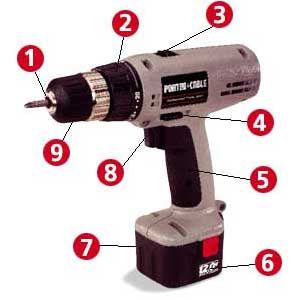
- Chuck jaws: Maximum capacity on most drills is 3/8 inches. Some 14.4 and 18V drills can handle 1/2-inch-diameter bits.
- Clutch: More settings give you greater control of the depth screws are driven.
- Speed-range switch: High is for drilling; low is for driving screws. Look for the widest range between them.
- Forward/reverse switch: Should be easy to operate with your thumb and trigger finger.
- Hand grip: Texture and contour should aid your grip; try out the grip before you buy.
- Voltage: More voltage means more power, but also added weight.
- Battery: If you’ll be using your tool for extensive home renovation projects, get a second battery.
- Trigger: Make sure your index finger fits around it comfortably when gripping the drill. Variable speed offers the greatest control.
- Keyless chuck: Hand-turn it to open and close the chuck jaws.
Cordless Drill Ergonomics and Comfort
Comfort and grip are important, especially if you’ll be using the drill for extended periods. A well-designed drill should fit comfortably in your hand and offer a secure grip to reduce fatigue and improve control.
- Ergonomic design: Look for drills with ergonomic handles that conform to the shape of your hand. Features such as soft rubberized grips can provide additional comfort and reduce vibrations.
- Weight and balance: The weight of the drill should be manageable, and the tool should be well-balanced to minimize strain. Heavier drills can be more tiring to use, while a well-balanced drill distributes the weight evenly, making it easier to handle.
- Additional features: Some drills offer auxiliary handles that provide extra stability and control, especially when drilling into harder materials. LED lights are also a useful feature, illuminating the work area and allowing for precise drilling in low-light conditions.
In the video below, This Old House’s Tom Silva demonstrates how to properly use a drill.
Our Review Standards
To select products for testing, our team scoured the web for the best cordless drill options. We looked at general factors like Prime shipping eligibility, the number of customer reviews a drill had, average customer ratings, and Amazon superlatives, in addition to factors specific to cordless drills like the manufacturer, voltage, and accessories.
After narrowing down our choices, we ordered the products to be tested and created a series of testing metrics that we would grade the products against. Below is an overview of our testing metrics, process, and scoring breakdown.
Testing Metrics
To compare cordless drills, we tested the products on factors like ergonomics, power, and runtime.
Ergonomics
You’ll want a cordless drill that fits comfortably in your hand, isn’t too heavy, and has a balanced weight from the base to the tip. Comfort is especially important if you’re using the drill for tasks that require you to hold the drill above your head or use the drill for extended periods.
Power
Most drill manufacturers measure nominal voltage, which is the number of volts used while the tool is in use, but some drill manufacturers measure maximum voltage, which is the surge of power that occurs when you first turn on the drill. Cordless drills have a nominal voltage of either 12 volts or 18 volts. If you see a drill with 20 volts, the manufacturer measured the maximum voltage, which translates to 18 volts in nominal voltage.
Twelve volts are usually sufficient for household projects, like driving a screw into the wall to hang a picture. However, if you need a drill for more heavy-duty tasks, an 18-volt drill may serve you better. Keep in mind that cordless drills don’t offer as much power as corded drills, so if you need a drill that can drill holes or drive screws through every material imaginable, you may want to buy a corded model.
Runtime
Having your drill die in the middle of a project and waiting for its battery power to recharge can put your project on hold. Because of this, you may want to invest in a cordless drill with a battery that will last for several uses and has a short recharge period.
Before buying a drill, look at its amp hours, which is the size of the battery’s tank—more amp hours means a longer runtime. You should also consider how long it takes for the battery to recharge or look for a drill with a spare battery so that you can keep using your drill while the other battery is charging.
Our Testing Process
When testing ergonomics, we measured three factors—weight, comfort, and balance. To measure weight, we weighed each drill with a scale. For comfort, we picked up the cordless drill, drove screws into a 2×4, and analyzed how comfortable the drill felt when performing the task. To measure balance, we held the product to determine if the weight was evenly distributed throughout the drill.
To test power, we drilled holes into three types of wood—a soft whitewood, a medium yellow pine, and a hard red oak. Each drill then drove screws into those same types of wood. While performing this test, we measured how easy it was for the drills to drill holes and drive screws, paying particular attention to the difference between the 12-volt and 18-volt drills.
For runtime, we powered the drill until the battery died and then recharged it. We kept track of how long it took for the battery to die and recharge. We compared these times against each other and the manufacturer specifications.
Scoring
Each testing metric was scored out of five points, and a product’s final score was an average of all metric scores combined.
Ergonomics
For the weight test, we awarded 2 points to a drill if it weighed five pounds or less. We deducted 0.5 points for every half a pound over five pounds a drill weighed. For example, if a drill weighed 6 pounds, we deducted 1 point.
For the comfort test, we awarded 2 points to a cordless drill if it didn’t make our hand hurt while performing the tests. We deducted 1 point if our hand hurt after using the drill or if it felt uncomfortable to use.
For the balance test, we awarded 1 point to a drill if we determined the weight to be evenly distributed throughout the item; we deducted 0.5 points if the weight was unbalanced.
Power
Each drill received six power scores—one for drilling holes in whitewood, one for drilling holes in yellow pine, one for drilling holes in red oak, one for driving screws in whitewood, one for driving screws in yellow pine, and one for driving screws in red oak. The scores were based on a scale of 1-5 and were determined by how well the screws went into the wood if the holes were the right sizes, and if the drill struggled at all during the process. A drill’s final score was an average of all six power scores.
Runtime
We compared each drill’s battery life and recharge length advertised by the manufacturer to the battery’s actual performance, awarding 2.5 points for battery life and 2.5 points for the recharge length. If a drill’s battery lasted as long as the manufacturer said it would and recharged in the amount of time the manufacturer said it would, the drill received all 5 points. If it didn’t, we docked points from the product’s battery score.
How To Test a Cordless Drill Before Buying
If possible, it’s helpful to test a drill before buying it. Here are some tips for evaluating a drill in-store or through online research:
In-Store Testing Tips
Testing a drill in person can help you decide if it’s right for your needs. Here are some steps to follow:
- Check the weight and balance: Hold the drill in various positions to assess comfort and maneuverability.
- Test the chuck: Practice changing bits to ensure the chuck operates smoothly and securely holds bits in place.
- Evaluate the clutch: Try different settings to get a feel for the range of control.
- Test the trigger: Ensure the variable speed control is responsive and easy to modulate.
- Assess noise and vibration: Run the drill to check for excessive noise or vibration, which could indicate poor quality.
What To Look for in Online Reviews
When buying online or researching models, pay particular attention to these aspects in user reviews:
- Battery life and charging time: Look for consistent reports of good runtime and reasonable charging speeds.
- Durability: Check for feedback on how well the drill holds up over time.
- Performance in various materials: Look for reviews that mention using the drill on different surfaces and materials.
- Comfort during extended use: Long-term users often provide valuable insights on ergonomics.
- Customer service and warranty experiences: If you plan to use your drill frequently, look for a stronger warranty that will cover your tool if you encounter issues down the line.
Maintenance and Care for Your Cordless Drill
Proper maintenance can significantly extend the life of your cordless drill and ensure consistent performance. Here are some key tips for keeping your drill in top condition:
Proper Battery Care
- Avoid complete discharge: Li-Ion batteries perform best when kept between 20% and 80% charge.
- Store batteries properly: Keep batteries in a cool, dry place when not in use.
- Use manufacturer-recommended chargers: Off-brand chargers may not provide optimal charging cycles.
- Rotate multiple batteries: If you have more than battery, use them alternately to ensure even wear.
Cleaning and Storage
- Regular cleaning: Use compressed air to blow out dust and debris from vents and moving parts.
- Lubrication: Occasionally apply a drop of machine oil to the chuck to keep it operating smoothly.
- Bit maintenance: Keep drill bits clean and sharp for optimal performance.
- Proper storage: Store your drill in a dry place, ideally in a case to protect it from dust and impacts.
Additional Accessories To Enhance Your Drill’s Versatility
To maximize the utility of your cordless drill, consider investing in these accessories:
- Drill bit sets: A comprehensive set allows you to tackle various materials and hole sizes.
- Driver bit sets: Different screw types require specific driver bits for optimal performance.
- Hole saw kit: Useful for cutting larger circular holes in wood or drywall.
- Right angle attachment: Helps access tight spaces where the drill body won’t fit.
- Magnetic bit holder: Keeps screws in place for easier one-handed operation.
Frequently Asked Questions About Cordless Drills
Can you use a drill for more than just drilling holes and driving screws?
Yes. You can buy a variety of accessories to attach to the chuck that will allow you to:
- Clean surfaces
- Dig holes
- Mix paint
- Pull weeds
- Sand and polish furniture
- Till soil
Do cordless drills come with two batteries?
Sometimes, manufacturers will include two batteries with your drill. Having multiple batteries allows you to keep working when the first one dies and prevents you from having to put your project on pause while you’re waiting for the one battery to recharge. TheDEWALT drill in this review come with two batteries.
How do I stay safe while using a cordless drill?
You’ll want to keep your hands and face away from the drill to prevent debris from entering your eyes. We recommend wearing work gloves and safety glasses for extra protection.
What volt of drill is best for home projects?
12-volt drills will be efficient for most home projects. You may also find that 12-volts are easier to use due to their lighter weight. 18-volt drills will last longer, however, making them a good choice for long-term projects. They are also effective when you need maximum torque.
How We Selected the Best Cordless Drills
To provide our readers with the best recommendations possible, we rely on several key sources of information to help guide our selection process.
Initial Research: Our research process began by generating a list of cordless drills with a significant number of verified buyer reviews and an average customer review rating of 4–5 stars. We looked at positive and negative reviews alike, focusing on information from both satisfied and critical buyers.
Expert Insights: Through our years of experience, we’ve learned that listening to what others have to say is key to building accurate, well-rounded articles. To complement our in-house expertise, our team looked at reviews and videos from trusted publications and independent testers, spoke with subject matter experts, and drew insights from reader contributions.
Final Product Selection: We then began fine-tuning our list by replacing older models with the latest versions and eliminating any discontinued models. From there, we pared the list down further by comparing each model’s feature set and selecting the best-in-class options for various buyers, budgets, and scenarios.
Why You Can Trust Us
This Old House has empowered homeowners and DIYers for more than four decades with top-notch home improvement advice in the form of television programs, print media, and digital content.
Our team focuses on creating in-depth product and service review content. To date, we’ve published numerous tool reviews, from cordless drills and impact drivers to tape measures and laser levels.
Once we conclude our research, we craft a comprehensive, user-friendly article of recommended products and additional information to help our readers make the right purchase.
Questions or Comments?
To share feedback or ask a question about this article, send a note to our team at reviews@thisoldhousereviews.com.

